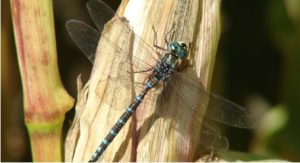Bald Eagle – Common Loon Interaction Study
Bald Eagle and Common Loon populations in New Hampshire were historically low, but have been in recovery due to active monitoring and management. Both species are still listed as threatened
Bald Eagle and Common Loon populations in New Hampshire were historically low, but have been in recovery due to active monitoring and management. Both species are still listed as threatened
Swifts and swallows are among a group of birds collectively known as “aerial insectivores” because they feed by capturing insects on the wing. Over the last 5-10 years, it has
Butterflies are widely recognized as important components of natural ecosystems. Adults can be important pollinators, larvae can be major herbivores, and all life stages provide food to other wildlife species.
Climate change researchers predict that rising global temperatures will dramatically impact ecosystems and many of the species they support. One such change that will undoubtedly affect many plants and animals
NH Audubon has joined state and federal agencies and other organizations to raise awareness of two invasive insects that threaten New Hampshire’s forests – the Asian Longhorned Beetle (ALB)
NH Audubon has been a leader in monitoring and management of the state’s recovering Bald Eagle population for over three decades. NHA conservation biologists have coordinated New Hampshire’s portion of
At 5000 acres, the Hampton-Seabrook Estuary contains the largest amount of salt marsh in the state. These marshes, along with their associated tidal flats, provide critical habitat for breeding and
Top Ten Things YOU can do to Help Conserve New Hampshire’s Birds (pdf download) Early in 2010, NH Audubon and NH Fish and Game released a first of its kind
The NH Audubon Conservation Department is working with the New Hampshire Department of Resources and Economic Development, the New Hampshire Fish & Game Department, and the White Mountain National Forest

New Hampshire is home to over 160 species of dragonflies and damselflies, but until recently there was no comprehensive information on the status of these insects in the state. The